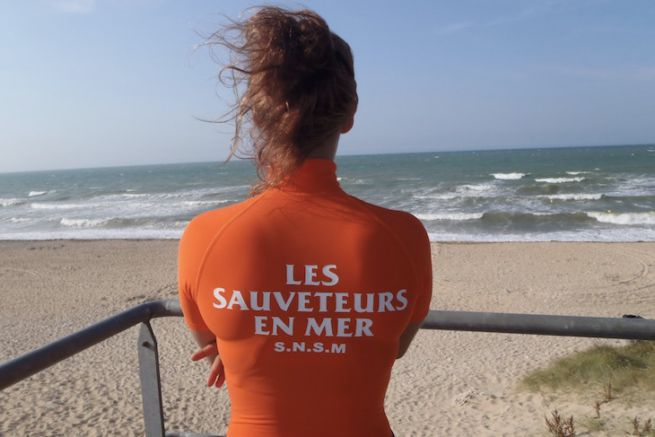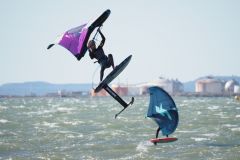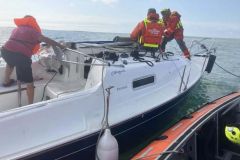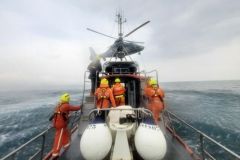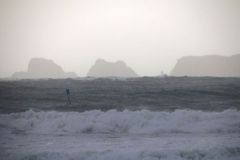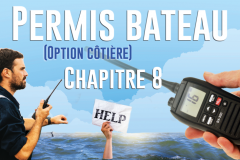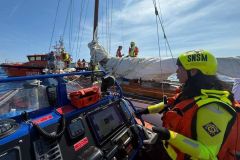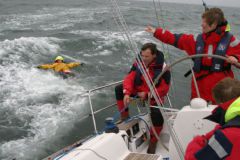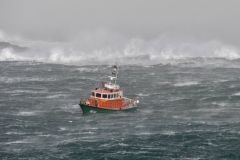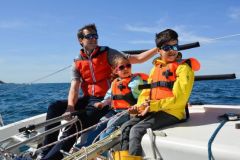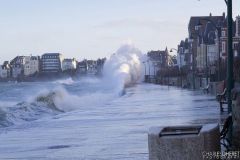Provide Lifesaving Swimmer Training
The SNSM trains an average of 500 rescue swimmers per year. Aged 18 to 25, they are volunteers and monitor the swimming of more than a third of the beaches monitored during the summer period. A "function" that they occupy for an average of 3 years.
Lifesaving Swimmer training is provided by 800 volunteer trainers in the 32 Training and Intervention Centres. This training is accessible to all with the objective of becoming Lifeguards. It is a long training (350 hours in the year) and can be followed for a budget of 900 euros. At the end of the year, a diploma is obtained. "The idea is still to become a volunteer with the SNSM after this training. We can then watch the beaches in France" explains Annick Avierinos, the association's communications officer.
Sharing expertise
The sea rescue specialist association has decided to share its expertise in rescue techniques with boaters. This approach allows those who would like to follow a training course in maritime safety or other rescue actors to discover how the SNSM organises its training courses.
The Société Nationale des Sauveteurs en Mer provides 3 modules with the following themes:
- Emergency navigation and rescue with an inflatable boat
- Moving and rescuing using a rescue board (paddle)
- Swimming rescue with or without equipment (lifebuoy or rescue tube)
They can be consulted and downloaded from the association's website (link at the bottom of the page).

Meet the SNSM's National Training Centre
The Pôle National de la Formation (PNF) des Sauveteurs en Mer team will be present at Secours Expo (free access) from February 8 to 10 in Paris. It will present the way in which lifeguards are trained and will be able to answer any questions from visitors wishing to follow a training course on safety at sea.
Parc des Exposition - Hall 5.1, stand C16 - Porte de Versailles PARIS
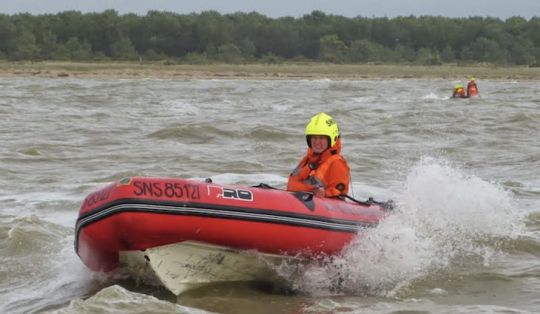
Lifesaving Swimmer Training
To become a Lifeguard Swimmer in one of the 32 IFCs, the following qualifications are required:
- Restricted Radiotelephone Certificate (CRR) to communicate with VHF radios.
- Boat licence to pilot motorized rescue craft (Inflatable Rescue Boat (IRB), Inflatable Rescue Boat (IRB), Motorized Watercraft (MNV))
- First Aid Teams at levels 1 and 2 (PSE1 and PSE2) to provide first aid and other first aid procedures.
- The Brevet National de Sécurité et de Sauvetage Aquatique (BNSSA) to be able to monitor all bodies of water (swimming pool, lake, beaches...)
- The Coastal Aquatic Lifeguard Surveillance and Rescue (SSA) certificate of competence with its pilotage endorsement, which formalises the training process and the standardisation of rescue techniques acquired by the Lifeguard Swimmer.

 /
/ 